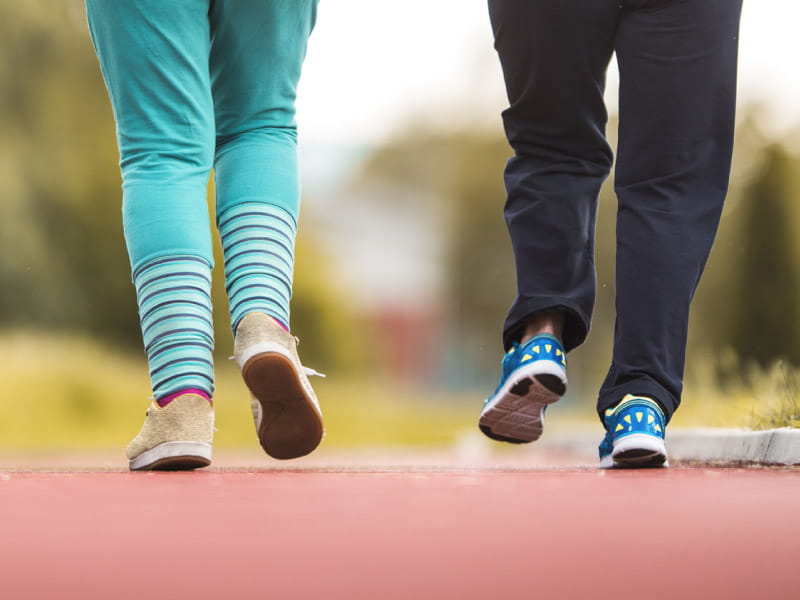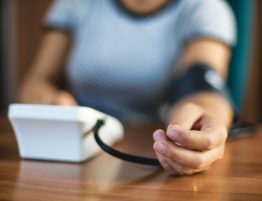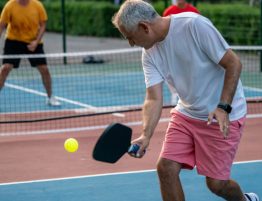
People with a condition that restricts blood flow to the legs and feet may be able to improve their long-term walking ability by walking for exercise at a pace that feels painful or uncomfortable, new research suggests.
The study, published Wednesday in the Journal of the American Heart Association, found people with peripheral arterial disease, or PAD, who walked at a speed that caused painful symptoms increased their walking speed and leg function more than those who walked for exercise at a more comfortable pace.
“We were surprised by the results because walking for exercise at a pace that induces pain in the legs among people with PAD has been thought to be associated with damage to leg muscles,” senior study author Dr. Mary McDermott said in a news release. She is a professor of medicine and preventive medicine at Northwestern University’s Feinberg School of Medicine in Chicago.
“Exercise that induces leg pain is beneficial, though difficult,” she said. “We now are working to identify interventions that can make the higher intensity exercise easier – and still beneficial – for people with PAD.”
An estimated 8 to 10 million U.S. adults have PAD, a condition characterized by reduced blood and oxygen flow stemming from a narrowing of the arteries that take blood from the heart to the rest of the body. The condition typically affects the legs and feet, causing symptoms during walking such as cramping, weakness, fatigue, aching, and pain or discomfort that fade within 10 minutes after resting.
According to a 2021 policy statement from the American Heart Association, Black people, American Indians and people with low social and economic status are disproportionately affected by PAD, which can lead to amputation.
Prior research has shown walking for exercise can improve walking ability and walking distance for people with PAD. This study explored whether doing so at a pace that caused symptoms such as leg pain could improve speed, strength and balance.
Researchers studied 264 adults with PAD from four U.S. medical centers who were randomly assigned to one of three groups: walking for exercise at home at a pace that induced pain and discomfort, walking for exercise at a more comfortable pace and not walking for exercise. Participants, who were an average of 69 years old, were followed for 12 months, with walkers wearing a device to monitor walking intensity and duration.
All participants took a set of leg function tests at the study’s outset, at six months and after 12 months. They were tested for walking speed over a four-meter distance at their usual walking pace and fastest walking pace. Researchers also assessed participants’ balance while standing and how long it took them to rise five times from a chair.
After six months, the group that walked at a pace that caused pain or discomfort was able to walk 11 feet per minute faster than the group that walked at a comfortable pace, and almost 13 feet per minute faster than the group that did not walk for exercise. After 12 months, the group that experienced pain walked 16 feet per minute faster than the more comfortable group. There was no significant improvement in walking speed for those who walked at a comfortable pace compared with those who didn’t walk for exercise at all.
After 12 months, people who experienced leg pain or discomfort when walking also performed better in the additional testing that measured leg function than those who walked at a more comfortable pace.
“This finding is consistent with “no pain, no gain” with regard to walking exercise in PAD,” McDermott said.
The authors noted that participants in the study walked at home and not on a treadmill in the presence of a health professional, which is considered the standard of care under clinical practice guidelines.
AHA volunteer expert Dr. Joshua Beckman, who was not involved in the research but was a member of the writing group for the AHA’s 2022 PAD National Action Plan, said in the news release that people with PAD can lead active and long lives but should monitor their condition and consult with a health care professional if things change.
“If you notice walking is becoming more difficult, keeping up with others is hard, or you have pain when you walk, talk with a doctor and describe when it happens and how it feels,” said Beckman, who also is a professor of medicine and director of vascular medicine at Vanderbilt University Medical Center in Nashville, Tennessee.
If you have questions or comments about this American Heart Association News story, please email [email protected].




